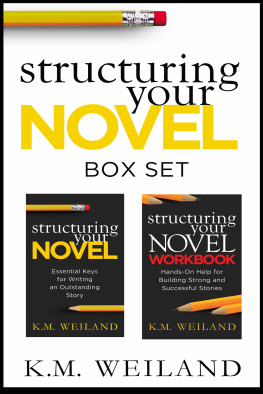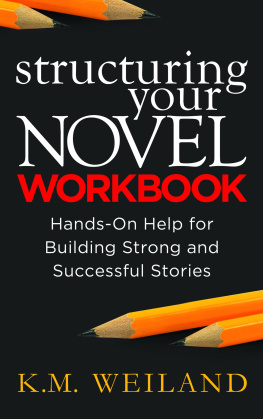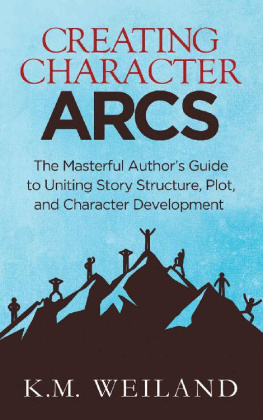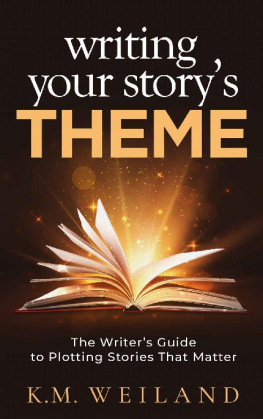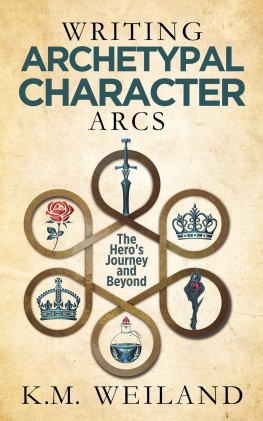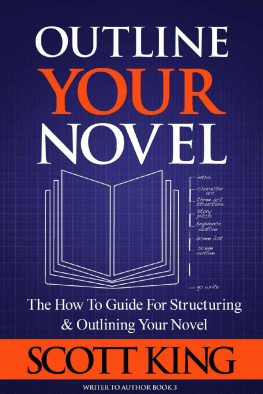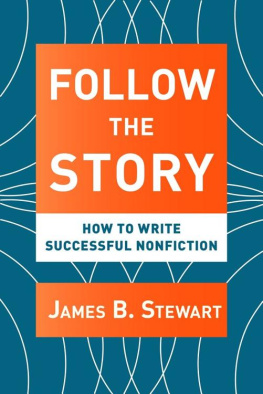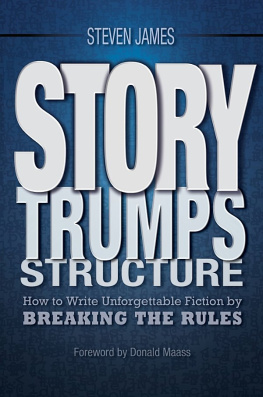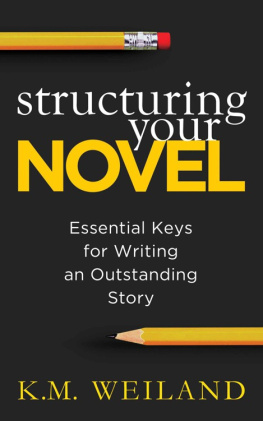K.M. Weiland
Introduction
Why Should You Care About Story Structure?
WHATS THE SINGLE most overlooked, misunderstoodand yet importantpart of storytelling? Since youre holding this book, you already know the answer is structure. Most uninitiated writers have two different reactions to the idea of story structure. Either they think its great, but too mystical and lofty to be understood by common mortals, or they think its formulaic hooey that will sap the art right out of their books.
I started out somewhere in betweenin the huh? camp that doesnt even realize there is such a thing as structure. From there, I progressed to reading complicated outlines that left me shaking my head. If that was structure, then my story would practically be written for me before I even came up with a decent idea. Thanks, but no thanks.
What I didnt know is that even as I subjected the idea of story structure to ignorance and ridicule, I was actually structuring my stories without even realizing it. In the years since, Ive been introduced to many theories of structure, all of which bear out the inevitable components found in all good stories, whether their authors deliberately structured them or were just lucky enough to wing it on their own good instincts.
Some experts approach to structure is mesmerizingly complex. John Trubys must-read The Anatomy of Story presents twenty-two elements of story structure. Syd Fields canonical Screenplay (which is just as valuable for novelists as for screenwriters) breaks story down to the simpler three-act structure. Both of these approaches incorporate the same tenets of structure, the largest difference being that Trubys breaks down the pieces into smaller chunks.
The macro level of story structure Ill be presenting in the following pages is a happy medium of the two: ten steps found in every story, which, when arranged correctly, give both authors and readers the biggest bang for their buck. Well be exploring scene structure as well, and while were at it, well also take a quick peek at sentence structure.
Before we dive into the nitty-gritty of story structure, first lets consider a few of the reasons every author should care about structureand why none of us should fear it.
Structure is required in all of art. Dancing, painting, singing, you name itall art forms require structure. Writing is no different. To bring a story to its full potential, authors must understand the forms limitations, as well as how to put its many parts into the proper order to achieve maximum effect.
Structure does not limit creativity. Authors often fear structure will inhibit their ability to be creative. If their books have to follow a certain road and observe certain pit stops, wont the story be written for them? But this isnt the case. Structure presents only a shapethe curve of the story arc that we all recognize as vital to a novels success. Structure allows us to be concrete and confident in our creation of that arc, ensuring the shape always turns out perfectly.
Structure is not formulaic. Another fear is that if every story has the same structure, wont every story ultimately be the same? But this isnt any truer than is the idea that because every ballet incorporates the same movements, every ballet must be the same. Structure is only the box that holds the gift. What that gift may be is as wildly varied as the wrapping paper that hides it.
Structure offers a checklist of must-have elements. Dont we read how-to books like this one because we want to discover and remember all the elements that make up a successful story? Structure is nothing more than a list of those elements, all tied up in one tidy package. How handy is that?
Structure solidifies mastery of the craft. Learning to consciously understand the techniques youre probably already using on an instinctive level can only broaden your understanding and tighten your mastery of the craft. When I first discovered the intricacies of structure, I was amazed to realize I was already incorporating most of the elements in my stories. Learning about those elements then allowed me to strengthen my raw instinct into purposeful knowledge.
Structure is exciting, comforting, and liberating all at the same time. Whether youre discovering the ins and outs of story structure for the first time or just brushing up, I hope youll enjoy our journey into the most salient and crucial moments in the creation of a story.
K.M. Weiland
September 2011
Part 1: Story Structure
Chapter 1
The Hook
A great first line is the collateral that grants the author a line of intellectual credit from the reader.
Chuck Wendig1
READERS ARE LIKE fish. Smart fish. Fish who know authors are out to get them, reel them in, and capture them for the rest of their seagoing lives. Like all self-respecting fish, readers arent caught easily. They arent about to surrender themselves to the lure of your story unless youve presented them with an irresistible hook.

